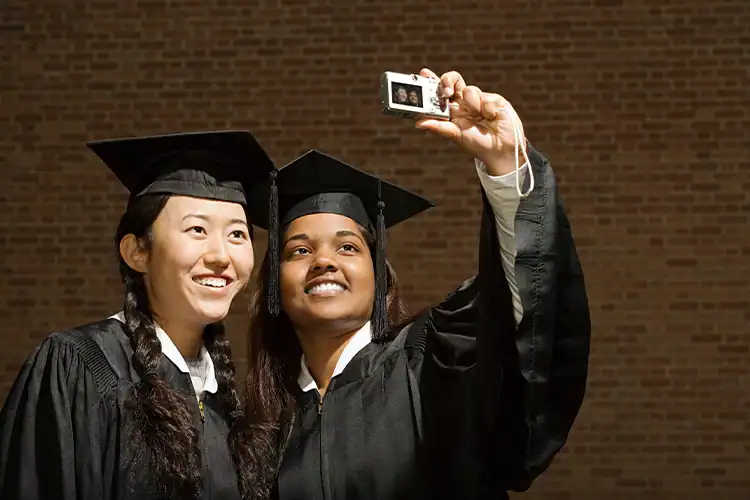10 Cheapest and Most Affordable Colleges in South Dakota
Updated: October 1, 2025

South Dakota is one of the most affordable places in the country to earn a degree. With in-state tuition at public colleges often well below the national average, plus scholarships like the South Dakota Opportunity Scholarship and tribal education benefits, you can pursue higher education here without taking on overwhelming debt. Living costs are also significantly lower than in most states, which makes your overall budget stretch even further.
Beyond affordability, South Dakota offers strong career opportunities in agriculture, healthcare, tourism, manufacturing, finance, and growing technology sectors. Major employers such as Sanford Health, Citibank, and Black Hills Corporation provide stable job markets, while renewable energy and tech companies are creating new pathways for graduates. Combined with the state’s small, supportive academic communities and abundant outdoor recreation, South Dakota gives you both value and opportunity.
Key Takeaways
- South Dakota’s public colleges and universities offer in-state tuition of around $8,500–$9,500 per year, well below the national average.
- The South Dakota Opportunity Scholarship and other state programs can cover a large share of tuition for eligible students.
- Living costs in South Dakota are about 35–50% lower than national averages, which compounds your savings.
- You’ll find strong career opportunities in agriculture, healthcare, tourism, and growing technology sectors.
- Affordable education in South Dakota does not compromise quality, with respected transfer pathways, professional programs, and supportive campus communities.

10 Most Affordable Colleges in South Dakota
South Dakota’s colleges give you strong value, whether you want a career-focused technical degree or a full four-year university experience. Below are the ten cheapest and most affordable colleges in the state, ranked by in-state tuition from lowest to highest, with details on standout programs, pros, and potential drawbacks.
Dakota State University
Located in Madison, Dakota State, a public university with a national reputation for technology and cybersecurity education. Its programs are designed to prepare graduates for high-demand roles in government, defense, and private industry.
Main courses
The university is best known for computer science, cybersecurity, and information systems, but it also offers programs in business, digital arts and design, and teacher education. Its National Security Agency (NSA) designation as a Center of Academic Excellence highlights its leadership in cyber defense.
Pros
- Among the lowest tuition rates for a four-year public university in South Dakota
- Leading cybersecurity and technology programs with strong federal partnerships
- Small campus size that supports a close-knit learning community
Cons
- Narrower liberal arts offerings compared to larger universities
- Small enrollment limits the variety of student activities
- Best suited for students interested in technology-focused careers
Average annual in-state tuition
$4,300
Southeast Technical College
Located in Sioux Falls, Southeast Tech offers affordable, hands-on training for students pursuing career-ready technical degrees. Its programs are closely tied to the needs of South Dakota’s largest city and regional employers.
Main courses
Healthcare programs (such as surgical technology, nursing, and medical assisting) are highly regarded, alongside information technology, automotive and diesel mechanics, and construction technology. Programs are designed to connect directly to Sioux Falls’ workforce.
Pros
- Excellent job placement rates across technical fields
- Affordable tuition with modern training facilities
- Strong partnerships with Sioux Falls employers
Cons
- Focused primarily on two-year degrees with limited transfer pathways
- Narrower academic scope compared to four-year institutions
- Less emphasis on research or liberal arts programs
Average annual in-state tuition
$7,650
Black Hills State University
Located in Spearfish, BHSU provides an affordable four-year education in one of the state’s most scenic regions. Students enjoy a balance of strong academics and access to the Black Hills’ outdoor recreation.
Main courses
Education and business programs are particularly strong, along with offerings in liberal arts, fine arts, and environmental science. Its proximity to the Black Hills supports unique opportunities in ecology and outdoor education.
Pros
- Affordable tuition for a four-year degree
- Beautiful location with access to hiking, climbing, and other outdoor activities
- Well-regarded teacher preparation programs
Cons
- Smaller research profile compared to flagship universities
- Remote setting may limit access to internships and employers
- Fewer graduate-level options compared to larger schools
Average annual in-state tuition
$9,100
South Dakota State University
Located in Brookings, SDSU is the state’s largest and flagship public research university. Known for its agriculture and engineering programs, it attracts students from across the Midwest.
Main courses
SDSU is a leader in agriculture, engineering, nursing, and pharmacy. Its research facilities support undergraduate and graduate education. The university also offers strong programs in business, education, and liberal arts.
Pros
- World-class agriculture and engineering programs with strong industry ties
- Wide selection of academic and extracurricular opportunities
- Active campus life, including Division I athletics
Cons
- Rural setting with harsh winters
- Larger class sizes in introductory courses
- Admission to nursing and pharmacy is competitive
Average annual in-state tuition
$9,540
University of South Dakota
Located in Vermillion, USD is the oldest university in the state and offers a wide range of programs, including South Dakota’s only public law and medical schools.
Main courses
The university excels in medicine, law, and business, while also offering strong liberal arts and fine arts programs. It serves as the state’s hub for professional education and advanced research.
Pros
- Strong professional programs in law, medicine, and business
- Beautiful campus with historic traditions
- Comprehensive academic and research opportunities
Cons
- Slightly higher tuition compared to regional public universities
- Rural location limits immediate access to large employers
- Competitive admissions for professional programs
Average annual in-state tuition
$9,400
South Dakota Mines (Rapid City)
South Dakota Mines is a specialized STEM university with powerhouse engineering and computing programs set in the Black Hills.
Main Courses
Mining, mechanical, civil, chemical and biomedical engineering, computer science and cybersecurity, geology, and physics. Hands-on labs, industry capstones, and internships drive high placement rates.
Pros
- Renowned STEM programs with strong employer pipelines
- Undergraduate research opportunities and modern labs
- Scenic location with extensive outdoor recreation
Cons
- Highly specialized curriculum with limited liberal arts
- Rigorous course loads
- Fewer non-STEM majors
Average Annual In-State Tuition
$10,623 (30 resident credits, tuition, and mandatory fees).
Northern State University (Aberdeen)
Northern State University offers an affordable residential experience with strengths in teacher education, business, and the arts.
Main Courses
Education, business and accounting, sport marketing, data analytics, fine arts and liberal arts, plus growing online and graduate options aligned to regional employers.
Pros
- Competitive resident pricing with small class sizes
- Strong teacher prep and business pathways
- Active campus life and athletics
Cons
- Rural setting with fewer large-company internships
- Smaller research footprint
- Some programs carry discipline-specific fees
Average Annual In-State Tuition
$9,094.50 (30 resident credits, tuition and mandatory fees).
University Of Sioux Falls (Sioux Falls)
University of Sioux Falls is a private Christian university known for close faculty attention and strong professional programs in South Dakota’s largest city.
Main Courses
Business, accounting, education, nursing and health sciences, social work, and liberal arts. Clinicals and internships leverage Sioux Falls’ regional hospitals, schools, and employers.
Pros
- Small classes and personalized advising
- Strong professional preparation in nursing, education, and business
- Urban location with abundant internships
Cons
- Higher sticker price than the public
- Faith-based requirements may not fit all students
- Limited large-scale research options
Average Annual Tuition (Private)
$22,900 (tuition $22,200 + general university fee $700).
Augustana University (Sioux Falls)
Augustana University is a private university recognized for rigorous academics, undergraduate research, and a strong liberal arts core with professional pathways.
Main Courses
Biology and pre-health, business and data analytics, education, nursing, the arts and humanities, and experiential learning embedded across programs, including J-Term study.
Pros
- Robust undergraduate research and honors options
- Strong pre-health and business outcomes
- Deep ties to Sioux Falls employers
Cons
- The highest private tuition among the schools listed here
- Competitive admission to some programs
- Limited technical and trades programs
Average Annual Tuition (Private)
$41,768 (tuition $40,664 + student fees $1,104).
Mount Marty University (Yankton)
Mount Marty University is a small Catholic university known for nursing and health sciences with a close-knit campus community.
Main Courses
Nursing and allied health, education, business, and liberal arts, plus service-learning and clinical placements across regional hospitals and schools.
Pros
- Excellent nursing reputation with small clinical cohorts
- Personalized attention and supportive community
- Faith-centered mission and service opportunities
Cons
- The highest overall cost in this set
- Limited major breadth compared with larger universities
- Smaller campus and alumni network
Average Annual Tuition (Private)
$35,775 (tuition $32,650 + required program support and wellness fees $3,125; housing and meals extra).
Tuition and mandatory fee amounts change regularly and can vary by program, course load, credit amount, and delivery format. The figures listed here reflect the latest numbers available and are intended for comparison only. Always confirm the current annual in-state tuition and required fees on the university’s official website before applying.

Key Requirements For Enrolling In The Most Affordable South Dakota Colleges
Complete Application Form Submission
Apply through each college’s online portal (or the Common App, where offered), and complete your financial aid form at the same time. If you are eligible for state programs such as the South Dakota Opportunity Scholarship, carefully review the checklist and timelines so your application materials align with scholarship deadlines.
Submit Official High School Transcripts
Ask your high school (or GED issuer) to send official transcripts directly to the college. Admissions and scholarship offices use these records to verify eligibility and place you in the right math and writing courses.
South Dakota Residency Verification
In-state tuition is based on Board of Regents residency rules. Be ready to document domicile (for example, driver’s license, voter registration, taxes, and length of physical presence) to qualify for resident rates and state aid.
ACT Or SAT Score Submission
Most South Dakota publics are test-optional for general admission, but certain competitive programs and scholarships may still consider ACT/SAT results. Check your intended major’s page and scholarship criteria before deciding whether to submit scores.
FAFSA Financial Aid Application Completion
File the FAFSA early. The federal submission deadline for the 2025–26 aid year is June 30, 2026 (with corrections due September 12, 2026). Filing unlocks federal aid and helps you stack state programs with institutional scholarships.
How Do South Dakota College Costs Compare To National Averages?
South Dakota’s public universities are priced below or around national norms for residents, and your living costs are generally lower than in many states in the region. For example, South Dakota State University lists 2025–26 resident tuition and fees of about $9,554, while University of South Dakota shows comparable resident per-credit pricing that totals in the low-to-mid $9k range for a typical full-time load. The U.S. public four-year average for tuition and fees is $11,610 in 2024–25, so many South Dakota residents pay less than the national benchmark before aid.
Technical colleges are also designed for value. Southeast Technical College publishes a unified statewide technical-college rate schedule and provides program cost sheets so you can see tuition, state-set fees, and local fees before you enroll. Pair those resident prices with scholarships (including the Opportunity Scholarship), and your net cost can be substantially lower than sticker price.
What Are The Tuition Fees For International Students At Affordable South Dakota Colleges?
At public universities, international students generally pay the nonresident rate. Illustratively, SDSU lists nonresident tuition and fees around the $13k range in its 2025–26 cost tables, while South Dakota Mines posts $16,200 for nonresident tuition and fees and $11,500 for residents. USD details resident per-credit charges and also maintains an international tuition page with scholarship offsets for eligible first-year students. Use each school’s current cost or cost-of-attendance page to build your budget.
Beyond tuition, plan for required student health insurance, the SEVIS I-901 fee and visa costs, books and supplies, and housing and meals. Because South Dakota’s living costs are comparatively low, your overall annual budget can be more manageable than in many higher-cost states, but the specifics vary by campus and program. Check the international office pages and cost calculators at your target schools to confirm line items and any available international scholarships.
How Does University Of The People Compare With Most Affordable Colleges In South Dakota?
University of the People (UoPeople) gives you a different path to an affordable degree. It is a tuition-free, fully online university, so you do not pay traditional tuition; instead, you pay low assessment fees at the end of each course. UoPeople is accredited by the WASC Senior College and University Commission (WSCUC) and the Distance Education Accrediting Commission (DEAC), which means recognized quality standards back your studies.
Which option fits you best depends on your goals. If you want flexible, anywhere learning with minimal upfront costs, UoPeople can be a smart choice. If you prefer hands-on labs, clinicals, student life, or direct ties to South Dakota industries like agriculture, healthcare, finance, and tourism, then a campus in the state may serve you better, especially when you stack state scholarships, tribal education benefits, and institutional aid. A simple way to decide is to compare the total cost of your full degree plan at both options and weigh that against the learning experience you want.

Ready To Choose The Most Affordable College?
Start by running your numbers. Use each college’s tuition and fees page, add program or lab fees, then add housing, food, books, transportation, and insurance if needed. File the FAFSA early, look at the South Dakota Opportunity Scholarship and tribal education benefits if you qualify, and ask each school how merit and need-based aid stack for someone with your profile.
Next, match programs to your goals and learning style. Focus on the state universities if you want in-person labs, D-I sports, or a classic campus experience. Consider a technical college if you want job-ready training with a short runway. If you need full online flexibility at the lowest ongoing cost, compare UoPeople’s programs and timelines. Talk with advisors, check accreditation for your major, and review graduation and placement data before you commit.
FAQs
What is the average tuition at South Dakota’s most affordable colleges?
Public in-state tuition is generally below the national average. Your net cost will depend on scholarships, grants, and program-specific fees, so always use each school’s current cost page and net price calculator.
Which South Dakota college has the lowest in-state tuition rates?
Dakota State University and the state’s technical colleges are often among the lowest for residents, but rates can change each year. Compare current bursar pages before you apply.
What financial aid programs are available at South Dakota colleges?
Start with the FAFSA, then layer state options like the South Dakota Opportunity Scholarship, tribal education benefits where eligible, and institutional merit and need-based awards. Many campuses also offer work-study.
Do South Dakota colleges offer online degree programs?
Yes. Most public universities and technical colleges offer online and hybrid pathways in select programs. UoPeople provides a fully online, tuition-free option with course assessment fees.
Do South Dakota colleges accept transfer credits from other schools?
Yes. Public institutions publish transfer guides and course equivalencies. Send official transcripts early and confirm how your credits apply to degree requirements.
Affordable colleges in other states
- Alabama
- Alaska
- Arizona
- Arkansas
- California
- Colorado
- Connecticut
- Delaware
- Florida
- Georgia
- Hawaii
- Idaho
- Illinois
- Indiana
- Iowa
- Kansas
- Kentucky
- Louisiana
- Maine
- Maryland
- Massachusetts
- Michigan
- Minnesota
- Mississippi
- Missouri
- Montana
- Nebraska
- Nevada
- New Hampshire
- New Jersey
- New Mexico
- New York
- North Carolina
- North Dakota
- Ohio
- Oklahoma
- Oregon
- Pennsylvania
- Rhode Island
- South Carolina
- South Dakota
- Tennessee
- Texas of 2025
- Utah
- Vermont
- Virginia
- Washington
- West Virginia
- Wisconsin
- Wyoming
